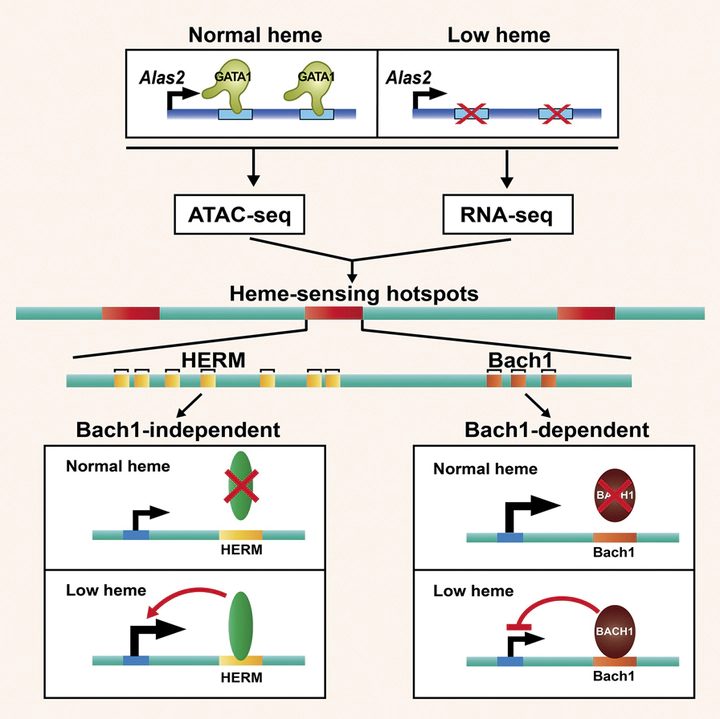
Abstract
Protein ensembles control genome function by establishing, maintaining, and deconstructing cell-type-specific chromosomal landscapes. A plethora of small molecules orchestrate cellular functions and therefore may link physiological processes with genome biology. The metabolic enzyme and hemoglobin cofactor heme induces proteolysis of a transcriptional repressor, Bach1, and regulates gene expression post-transcriptionally. However, whether heme controls genome function broadly or through prescriptive actions is unclear. Using assay for transposase-accessible chromatin sequencing (ATAC-seq), we establish a heme-dependent chromatin atlas in wild-type and mutant erythroblasts lacking enhancers that confer normal heme synthesis. Amalgamating chromatin landscapes and transcriptomes in cells with sub-physiological heme and post-heme rescue reveals parallel Bach1-dependent and Bach1-independent mechanisms that target heme-sensing chromosomal hotspots. The hotspots harbor a DNA motif demarcating heme-regulated chromatin and genes encoding proteins not known to be heme regulated, including metabolic enzymes. The heme-omics analysis establishes how an essential biochemical cofactor controls genome function and cellular physiology.